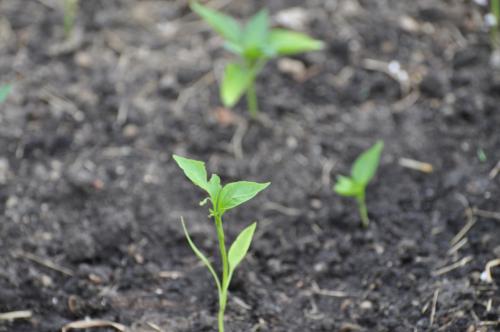Overcoming school garden barriers
There are many creative ways to overcome school garden barriers for a successful school garden program.
According to the Arizona Department of Education, the main barriers to developing and maintaining school gardens are the lack of funding, time and volunteers. Those involved with successful school gardens have found positive ways to overcome these barriers.
Different forms of organizing that get the entire community involved in the garden are often essential to overcoming school garden barriers. Holding a meeting of interested community members and inviting anyone that is affected by, benefits from or works in the garden to form a Garden Team can be a good start.

A Garden Team should be an organizational structure that outlasts any one person, parent, teacher or administrator, and will therefore contribute to the sustainability of the garden. This team can be crucial to filling in the gaps of the time, volunteers and resources gaps that are common to school gardens.
Parents, teachers and staff (including the janitorial staff) are obvious invitees to a Garden Team formation meeting. Often overlooked community members that are good to invite include local neighbors that own a truck or have a nice yard; these people have assets to share that could benefit the garden, students and teachers. Other good candidates to include in the meeting are people from local businesses such as hardware stores, garden stores, sign shops, local food industries and farmers markets. Other local organizations to involve in a meeting are non-profits such as faith based organizations, public service entities such as the police, fire department, Extension Service, labor unions and environmental organizations.
Many creative teachers incorporate garden maintenance activities into the school garden curriculum to assist with garden maintenance, and double dip for both hands-on learning and volunteers. For example, as a biology lesson, students can weed the garden and learn to identify the weeds. Or, as a useful math exercise, students can water the garden and then figure out how much water they used.
Most school gardens rely heavily on donations of funding, labor and materials from school and community members to fill gaps on funding. Other ways to overcome the funding gaps can be obtaining grant funding from government organizations to offset costs. Many thriving school gardens utilize corporate grant programs, such as the Lowe’s Outdoor Classroom Grant program. Others have established partnerships with local non-profits, such as the Detroit Public School A. L. Holmes working with Michigan State University Extension and the Georgia Street Community Collective to assist with the garden creation, curriculum and maintenance.



 Print
Print Email
Email

